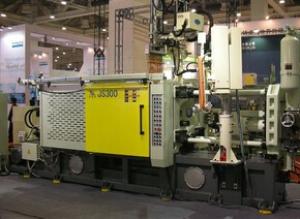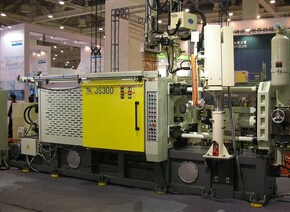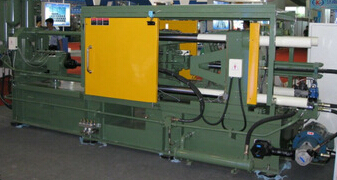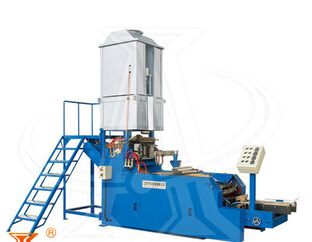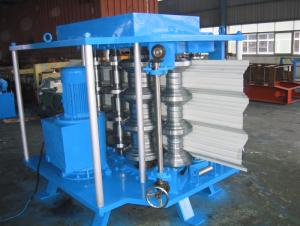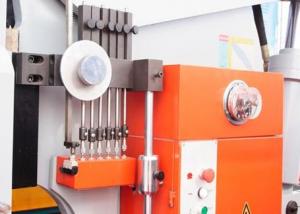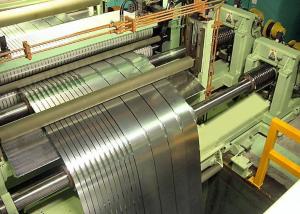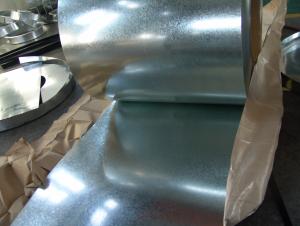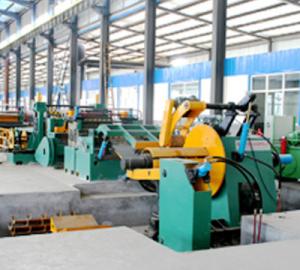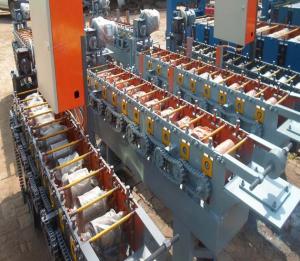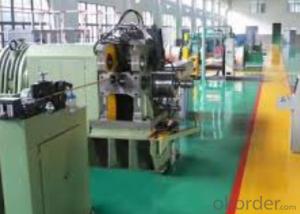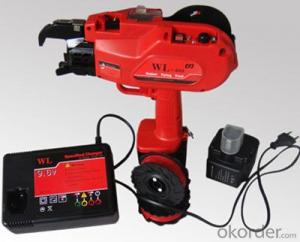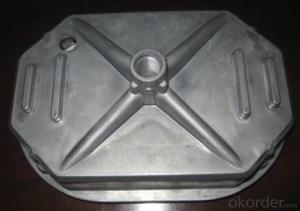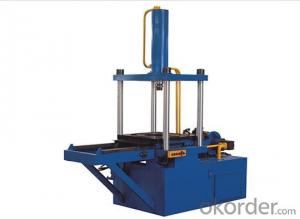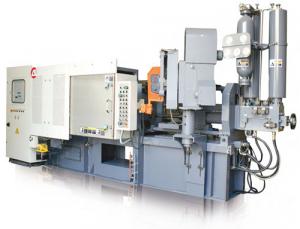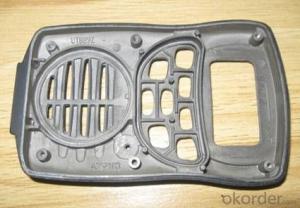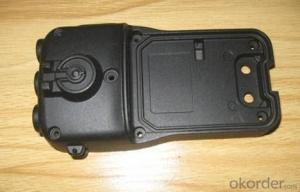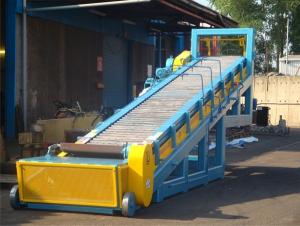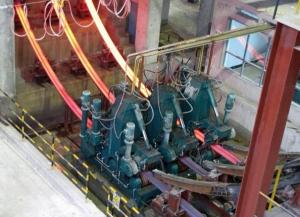Hight quality producing aluminium die casting machine
OKorder Service Pledge
Quality Product, Order Online Tracking, Timely Delivery
OKorder Financial Service
Credit Rating, Credit Services, Credit Purchasing
You Might Also Like
Specifications
1.Top brand of China in die casting machine line
2.Touch screen PLC
3.Fully automatic is available
4.2600Ton sold to Germany
Hydraulic system,and control system
1.All electric elements, valves, pumps and seal parts are made in Germany or Japan.
2.Imported proportional pressure valve and proportional flow valve for controlling the pressure and flow so that the mechanism can run quickly,stably,safely,reliably and energy-savingly.
- Q: What are the trends and advancements in metal casting machinery?
- In recent years, there have been several trends and advancements in metal casting machinery that have revolutionized the industry. These advancements have not only improved the efficiency and accuracy of the casting process but have also opened up new possibilities in terms of design and material options. One significant trend in metal casting machinery is the increased adoption of computer numerical control (CNC) technology. CNC machines have become more popular due to their ability to automate and streamline the casting process. These machines can precisely control the movement of the casting tools, resulting in more accurate and consistent castings. Additionally, CNC machines can also handle complex designs and geometries, enabling the production of intricate and customized metal castings. Another trend in metal casting machinery is the integration of additive manufacturing or 3D printing technology. 3D printing has gained significant momentum in recent years and has found its application in various industries, including metal casting. By combining 3D printing with metal casting, manufacturers can create complex molds and patterns with intricate details that were previously impossible or extremely challenging to achieve using traditional methods. This technology also allows for rapid prototyping and reduces the time and cost associated with developing new casting designs. Advancements in materials and processes have also played a crucial role in the evolution of metal casting machinery. New alloys and composite materials have been developed, offering enhanced properties such as improved strength, durability, and heat resistance. These advancements have expanded the range of applications for metal castings, enabling their use in industries such as aerospace, automotive, and medical. Furthermore, advancements in casting processes, such as the introduction of vacuum casting and investment casting, have improved the quality and consistency of castings. Vacuum casting helps eliminate air bubbles and porosity in the final product, resulting in higher-quality castings with improved mechanical properties. Investment casting, on the other hand, allows for the production of intricate and complex shapes with high dimensional accuracy. The incorporation of automation and robotics in metal casting machinery is another significant advancement. Automated systems can handle repetitive tasks, such as mold preparation, pouring, and cooling, with increased speed and precision. This reduces the reliance on manual labor, improves efficiency, and ensures consistent quality throughout the casting process. In conclusion, the trends and advancements in metal casting machinery are driving innovation in the industry. The adoption of CNC technology, integration of 3D printing, advancements in materials and processes, and the incorporation of automation and robotics have all contributed to improved efficiency, accuracy, and design possibilities in metal casting. These advancements are not only benefitting manufacturers but also opening up new opportunities for designers, engineers, and end-users, ultimately pushing the boundaries of what is possible in the field of metal casting.
- Q: How do you achieve desired mechanical and metallurgical characteristics with metal casting machinery?
- Achieving desired mechanical and metallurgical characteristics with metal casting machinery involves a combination of several key factors and processes. Firstly, selecting the appropriate metal alloy and composition is essential. Different alloys have varying mechanical and metallurgical properties, so choosing the right one is crucial. Once the alloy is determined, the next step is to prepare the mold. Proper mold design and preparation are critical to achieve the desired characteristics. This includes considering factors such as the gating system, risers, and the overall geometry of the mold. These elements help control the flow of molten metal and prevent defects like shrinkage or porosity. Maintaining the correct pouring and solidification temperature is also crucial in achieving the desired characteristics. This ensures proper solidification, minimizing the formation of undesirable microstructures and defects. Additionally, controlling the cooling rate can influence the final mechanical properties of the casting. To further enhance the metallurgical characteristics, heat treatment processes such as annealing, quenching, or tempering may be applied. These processes can modify the microstructure and improve the mechanical properties of the casting. Furthermore, post-casting processes like machining, grinding, or surface treatments can be employed to achieve the desired surface finish, dimensional accuracy, and mechanical properties. Lastly, quality control measures like non-destructive testing, visual inspection, and mechanical testing are essential to ensure that the desired mechanical and metallurgical characteristics are achieved. These tests help identify any defects or deviations from the desired specifications and allow for adjustments or corrective actions to be taken. In summary, achieving the desired mechanical and metallurgical characteristics with metal casting machinery requires careful consideration of factors such as alloy selection, mold design, pouring temperature, cooling rate, heat treatment, post-casting processes, and quality control measures. By optimizing these factors, manufacturers can produce castings with the desired properties for various applications.
- Q: What are the considerations for air pollution prevention and control in metal casting machinery?
- Metal casting machinery requires several important considerations for preventing and controlling air pollution. The first and foremost consideration is the implementation of effective engineering controls within the machinery itself. This entails installing efficient capture and ventilation systems that can effectively capture and remove airborne pollutants generated during the casting process. By designing and maintaining these systems properly, the release of pollutants into the air can be minimized. Another consideration involves the use of appropriate materials and technologies during the casting process. For example, utilizing cleaner fuels and reducing the use of hazardous chemicals can greatly reduce air pollution. Furthermore, the adoption of advanced technologies like low-emission burners or filtration systems can aid in controlling and reducing air pollutants emitted during casting. Regular maintenance and inspection of the machinery are vital considerations as well. Ensuring proper maintenance and optimal functionality of the machinery can help minimize emissions and prevent potential leaks or malfunctions that may contribute to air pollution. In addition, it is crucial to establish comprehensive training and education programs for workers involved in metal casting. By educating them about the importance of preventing and controlling air pollution and providing them with the necessary knowledge and skills for safe and efficient machinery operation, the risk of air pollution can be significantly reduced. Compliance with environmental regulations and standards is another critical consideration. Industries involved in metal casting must adhere to local, national, and international regulations related to air pollution control. This may include obtaining permits, conducting regular emissions testing, and implementing proper monitoring and reporting systems. Finally, fostering a culture of environmental responsibility within the organization is essential. Encouraging active employee participation in pollution prevention and control efforts, promoting sustainability, and continually seeking innovative solutions can make a significant contribution to reducing air pollution in metal casting machinery.
- Q: Can metal casting machinery be used for producing castings with good machinability?
- Yes, metal casting machinery can be used for producing castings with good machinability. The machinability of a casting depends on various factors such as the type of metal being cast, the casting process used, and the design of the casting. With proper control over these factors, metal casting machinery can produce castings that are suitable for machining operations, resulting in good machinability.
- Q: What are the different types of risering systems used in metal casting machinery?
- Metal casting machinery utilizes various types of risering systems to optimize the casting process and guarantee the production of superior metal castings. Among the frequently employed risering systems are: 1. The Top Riser System: Placing a single riser on the top of the casting is the key feature of this system. It proves most effective for small to medium-sized castings by minimizing the occurrence of shrinkage defects. The top riser ensures a continuous supply of metal to compensate for shrinkage during solidification. 2. The Side Riser System: This system involves the addition of extra risers on the sides of the casting. It is commonly employed for larger and more intricate castings to maintain a consistent metal supply throughout the solidification process. Side risers reduce porosity and shrinkage defects by providing an alternative pathway for the flow of liquid metal. 3. The In-Gate Riser System: In this system, in-gate risers are directly connected to the casting through a gating system. The purpose of the in-gate riser is to facilitate controlled feeding of molten metal to counteract solidification shrinkage. It finds extensive use in processes like sand casting and investment casting. 4. The Bottom Riser System: Placing a riser at the bottom of the casting characterizes this system. It effectively compensates for shrinkage defects in heavy castings or castings with thick sections. The bottom riser ensures a consistent supply of molten metal to counterbalance shrinkage during solidification. 5. The Hot Spot Riser System: This system entails the placement of risers in specific locations referred to as hot spots. Hot spots are areas of the casting that solidify last due to increased heat loss. By incorporating risers in these areas, the hot spot riser system guarantees a continuous supply of molten metal, preventing shrinkage defects and promoting uniform solidification. Each risering system presents its own set of advantages and is chosen based on the unique requirements of the casting process, including size, geometry, and material composition. The selection of the appropriate risering system plays a crucial role in achieving defect-free and high-quality metal castings.
- Q: Can metal casting machinery be used for investment casting of carbon fiber?
- No, metal casting machinery cannot be used for investment casting of carbon fiber. Carbon fiber requires a completely different casting process involving specialized equipment and techniques due to its unique properties.
- Q: What are the different types of software and automation systems used with metal casting machinery?
- Enhancing efficiency, accuracy, and productivity in metal casting machinery involves the use of various software and automation systems. These include: 1. Computer-Aided Design (CAD) software allows engineers and designers to create 3D models of cast parts. These models are then used for simulation, analysis, and optimization, enabling visualization of the final product and necessary design modifications before casting begins. 2. Computer-Aided Manufacturing (CAM) software generates machine-readable instructions for metal casting machinery. It converts the 3D models created in CAD software into toolpaths, ensuring precise and accurate casting production. 3. Simulation software predicts and analyzes the behavior of metal casting processes. It optimizes parameters, such as mold design, pouring temperature, and cooling rates, to minimize defects and ensure high-quality castings. 4. Process control systems monitor and control various parameters during casting, such as temperature, pressure, and timing. They automatically adjust process variables in real-time, ensuring consistent and repeatable casting results. 5. Quality control software inspects and analyzes castings for defects and deviations from specifications. It performs dimensional analysis, material testing, and surface inspection to ensure castings meet required quality standards. 6. Robotics and automation systems automate tasks in metal casting, such as mold handling, pouring, and post-processing. They increase efficiency, reduce labor costs, and improve overall productivity. 7. Data management and analysis software stores, analyzes, and interprets data generated during the metal casting process. It identifies trends, optimizes process parameters, and facilitates data-driven decisions to improve casting quality and productivity. Overall, these software and automation systems are crucial in modern metal casting operations. They enable manufacturers to efficiently and cost-effectively produce high-quality castings.
- Q: How is metal casting machinery used in the manufacturing industry?
- Metal casting machinery is widely used in the manufacturing industry for the production of various metal components. It plays a crucial role in shaping and forming molten metal into the desired shapes and sizes. One of the primary uses of metal casting machinery is to create intricate and complex parts that are difficult or impossible to manufacture using other methods. The machinery allows for the production of components with precise dimensions and intricate details, ensuring high-quality and accurate end products. Metal casting machinery is used to produce a wide range of products across various industries, including automotive, aerospace, construction, and many others. It is commonly employed in the manufacturing of engine blocks, transmission parts, valves, pumps, turbine blades, and various other metal components. The process begins with melting the metal, often in a furnace, until it reaches its liquid state. Once the metal is molten, it is poured into a mold cavity, which has been prepared to match the desired shape of the final product. The mold can be made of various materials, such as sand, ceramic, or metal. After the molten metal is poured into the mold, it is left to cool and solidify, taking the shape of the mold cavity. Once the metal has solidified, the mold is removed, revealing the newly formed metal component. The final product may require additional finishing processes, such as machining, grinding, or polishing, to achieve the desired surface finish and dimensional accuracy. Metal casting machinery offers several advantages in the manufacturing industry. It allows for mass production of components, making it cost-effective and efficient. The process can be easily scaled up or down to meet the production requirements, making it suitable for both small-scale and large-scale manufacturing operations. Additionally, metal casting machinery allows for the use of a variety of metals and alloys, including steel, iron, aluminum, copper, and many others. This versatility enables manufacturers to choose the most appropriate material for their specific application, considering factors such as strength, durability, and corrosion resistance. In conclusion, metal casting machinery is an essential tool in the manufacturing industry. It enables the production of intricate and complex metal components, offering high-quality and accurate end products. The versatility, scalability, and cost-effectiveness of metal casting make it a widely adopted method in various industries, contributing to the production of a wide range of metal products.
- Q: How does metal casting machinery handle the removal of heat treatment scale from the castings?
- Metal casting machinery typically uses various methods to handle the removal of heat treatment scale from castings. Heat treatment scale is a layer of oxidized material that forms on the surface of the castings during the heat treatment process. It needs to be removed to ensure the quality and integrity of the final product. One common method used by metal casting machinery is mechanical cleaning. This involves using abrasive materials or tools to physically remove the heat treatment scale from the surface of the castings. Mechanical cleaning can be done manually or using automated equipment, such as blasting machines or tumbling barrels. The abrasive materials used can be grit, sand, or steel shot, depending on the specific requirements of the castings. Another method employed is chemical cleaning. This involves using chemical solutions or agents to dissolve or loosen the heat treatment scale from the castings. Chemical cleaning is often used in conjunction with mechanical cleaning to achieve the desired results. The chemical solutions used can be acidic or alkaline, depending on the type of scale and the material of the castings. In some cases, metal casting machinery may also utilize thermal cleaning methods. This involves subjecting the castings to high temperatures in an oxygen-free environment, such as a controlled atmosphere furnace or a vacuum furnace. The heat causes the heat treatment scale to react and diffuse, effectively removing it from the castings. The specific method chosen for removing heat treatment scale depends on factors such as the type of casting material, the size and complexity of the castings, and the desired surface finish. Each method has its own advantages and disadvantages, and the choice is typically determined by the specific requirements of the casting process. Overall, metal casting machinery employs a combination of mechanical, chemical, and thermal cleaning methods to handle the removal of heat treatment scale from castings. These methods ensure that the castings are free from any surface imperfections and meet the desired quality standards.
- Q: How is the waste water treated in metal casting machinery?
- Waste water from metal casting machinery is typically treated through a combination of physical, chemical, and biological processes. The treatment involves removing solid particles, heavy metals, and any other contaminants present in the waste water. This is achieved through techniques such as sedimentation, filtration, coagulation, and ion exchange. Additionally, biological treatment methods like activated sludge process or anaerobic digestion may be employed to further break down organic pollutants. The treated waste water is then usually subjected to disinfection before it can be safely discharged or reused.
Send your message to us
Hight quality producing aluminium die casting machine
OKorder Service Pledge
Quality Product, Order Online Tracking, Timely Delivery
OKorder Financial Service
Credit Rating, Credit Services, Credit Purchasing
Similar products
Hot products
Hot Searches
